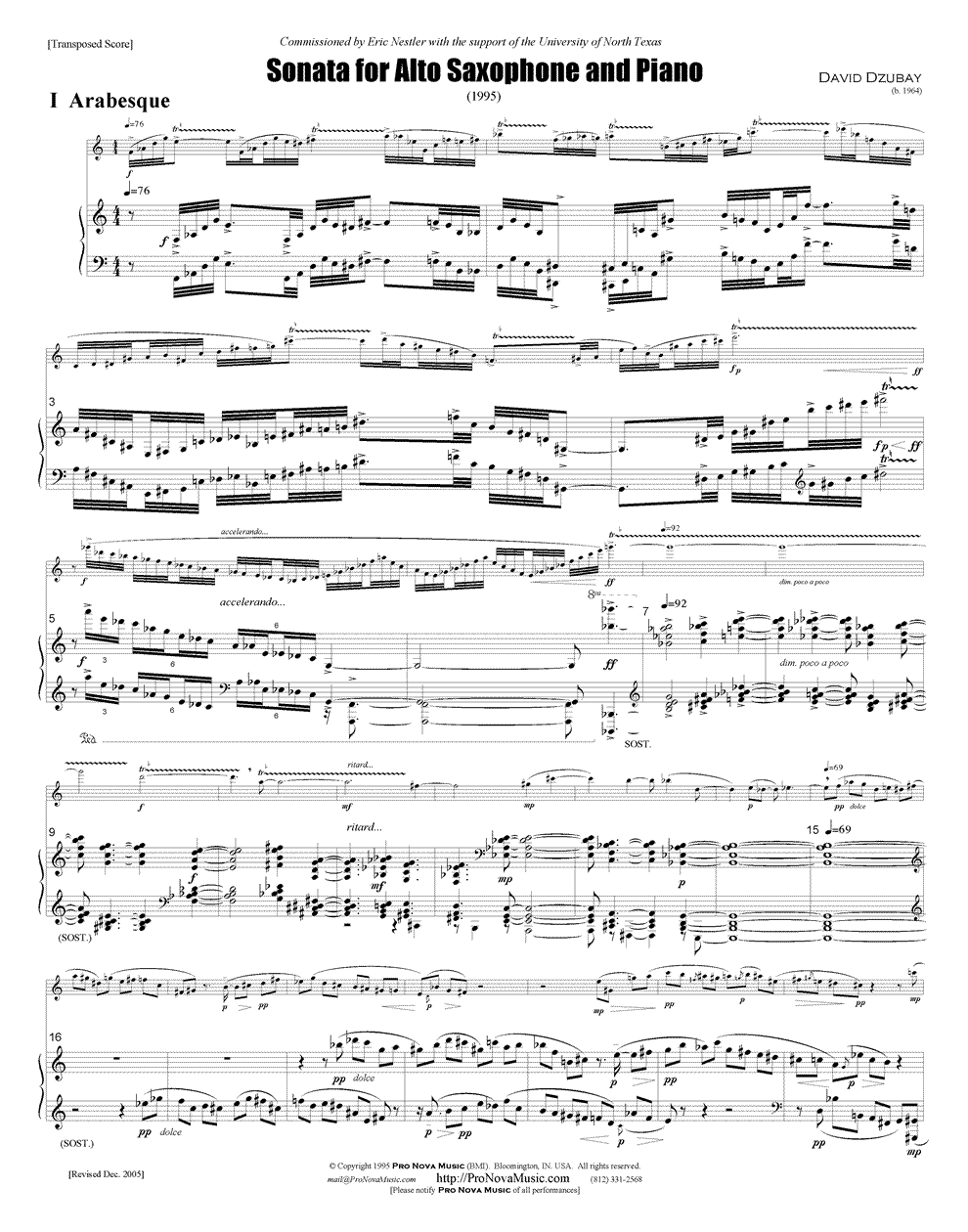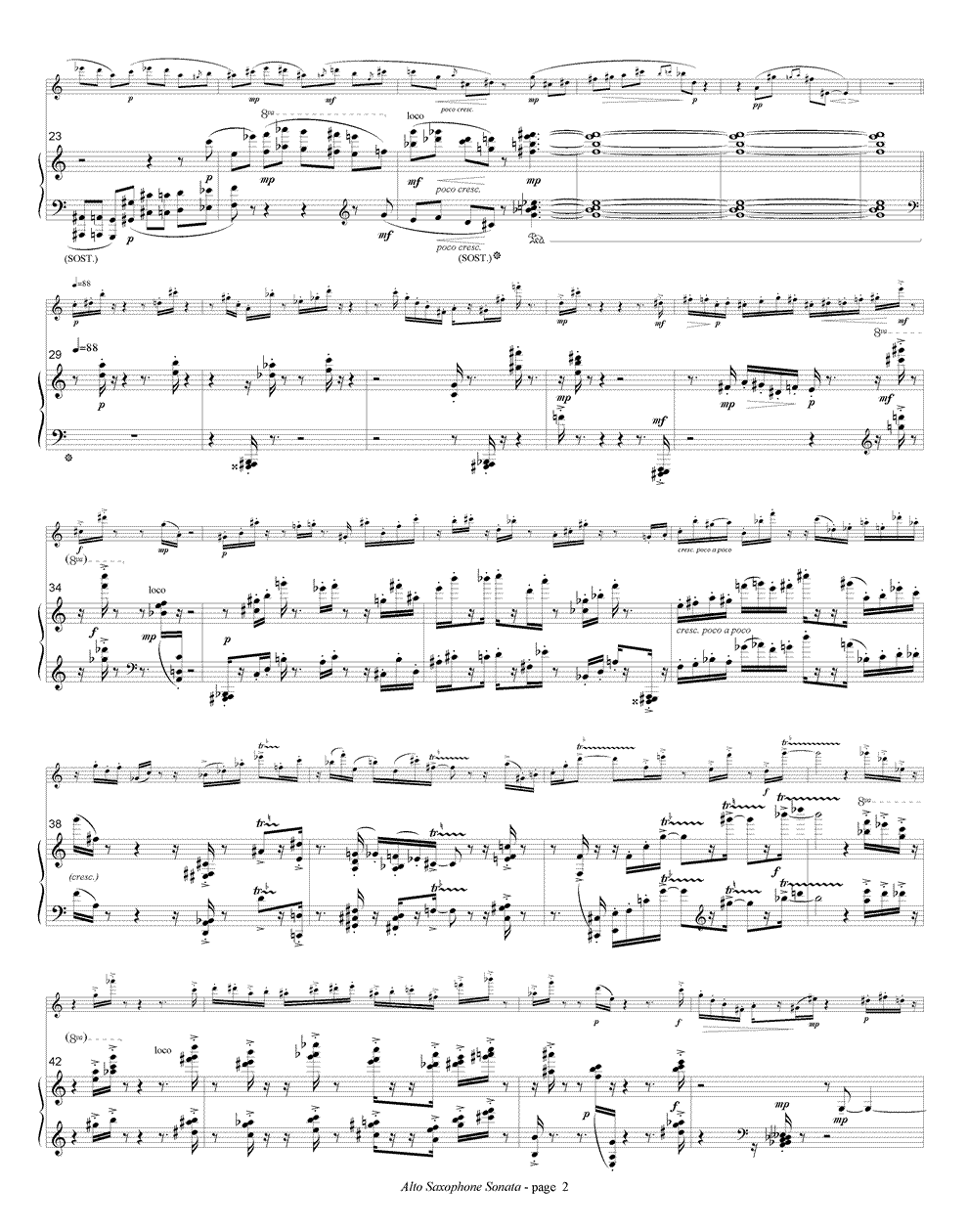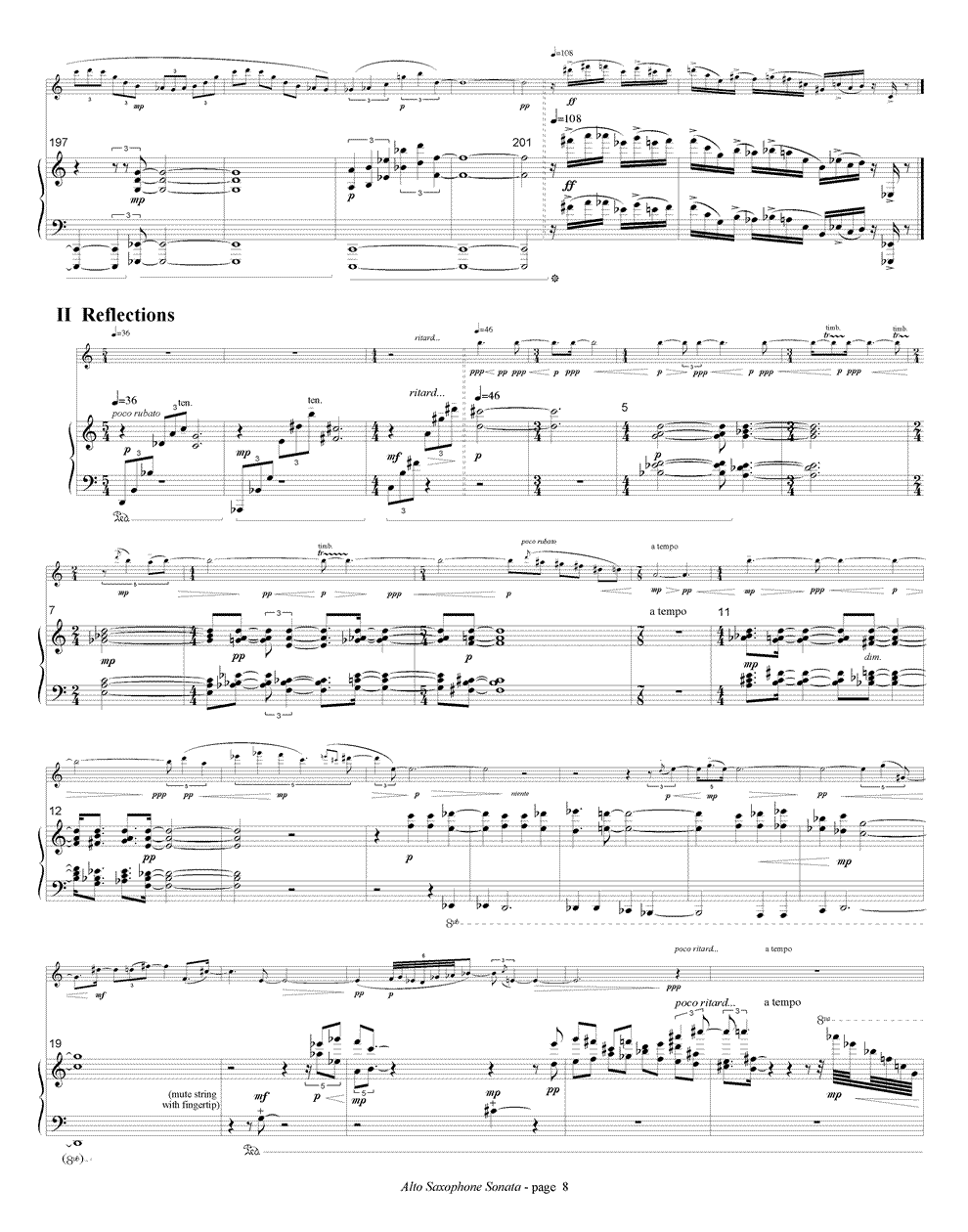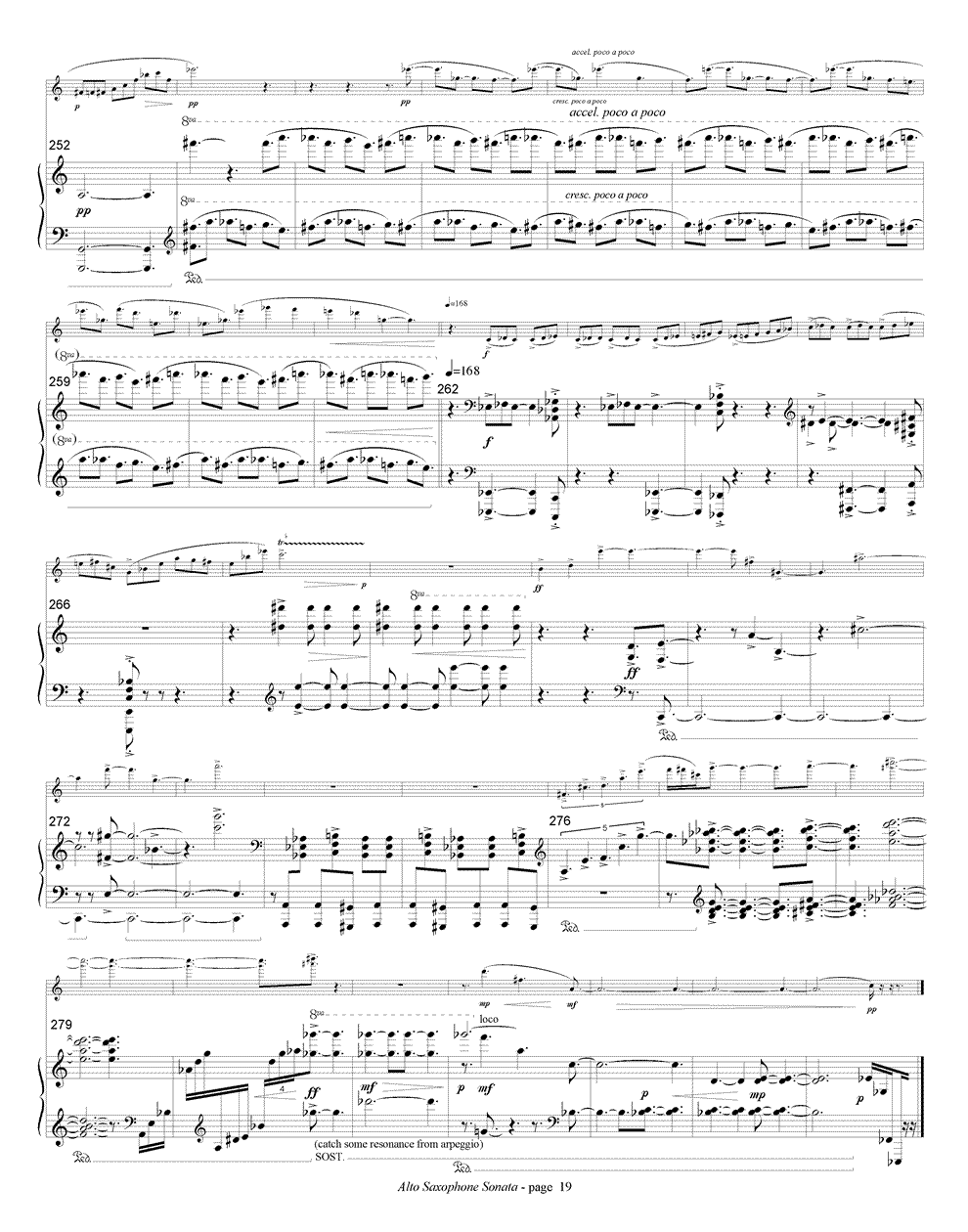Sonata for Alto Saxophone & Piano
(1994, rev. 1995)
- Arabesque
- Past
- Future
duration: 20 minutes
premiere: Eric Nestler and Kathryn Fouse, Denton, TX, December 3, 1995
live audio excerpts:
I. Arabesque
II. Past
III. Future
Perusal Score
Program Note
This work was commissioned by Eric Nestler with the support of the University of North Texas. The premiere was given by Eric Nestler and Kathryn Fouse on December 3, 1995, at the University of North Texas, Denton, TX.
The subtitle of the first movement of my Sonata for Alto Saxophone and Piano, Arabesque, came about because the music I was imagining features highly ornamented, intricately swirled melodic lines, which are often presented in canonic textures. The form of this movement also reflects the symmetry of an arabesque, the eleven sections of the movement falling into a palindrome, which has it's axis in the central 3/8 section.
Reflections, the second movement, is through composed, and except for a couple brief outbursts, has the dream-like quality of a nocturne. Most of the material here comes from the first movement, though it is transformed, as if reflected on a body of water by moonlight.
Reverberations makes use of another symmetrical form, though not as straight forward as a palindrome. If one were to toss two rondos into a blender, this form might be the result. This fast movement begins with alternations of three ideas (a, b, c), each of which are given four presentations which decrease in duration. One third of the way into the movement, this music is elided with three other ideas (x, y, z), also given four presentations each, this time increasing in duration. The result is the following form: abacbaxcbayxcbzyxczyxzyz. Whatever. Hopefully, because of the differences in (a,b,c) and (x,y,z), what comes across is a movement which begins with fairly static music with a lot of repetition, has a central, quasi-development section which is unstable in its rapid alternations, and works towards longer, goal oriented, less repetitive music in the last third. In addition to actual reverberations or echos in the music, this movement also reverberates material from the earlier movements.






